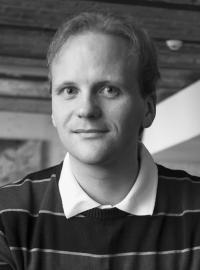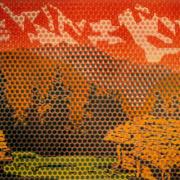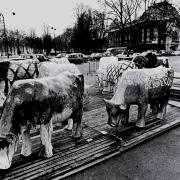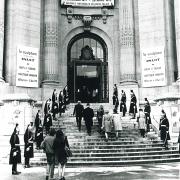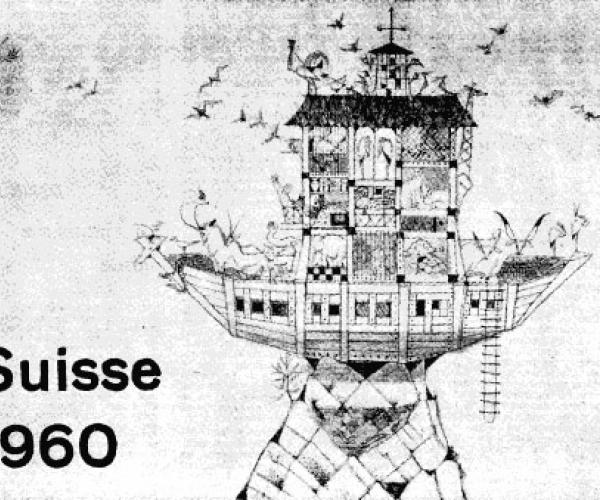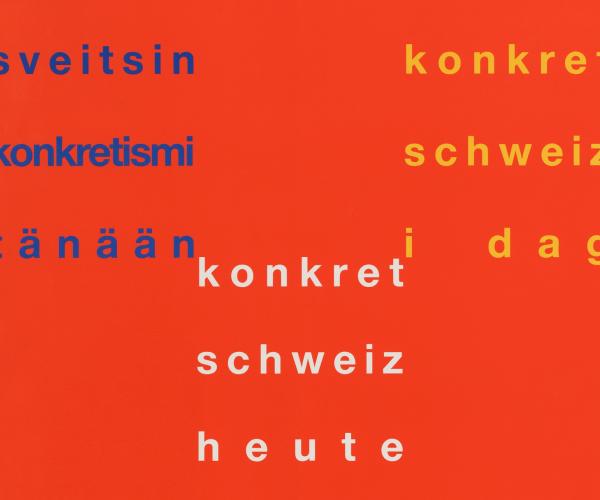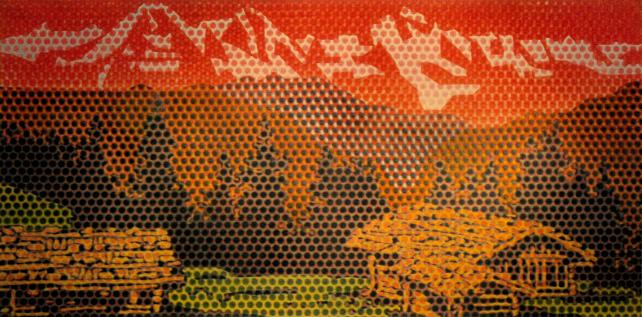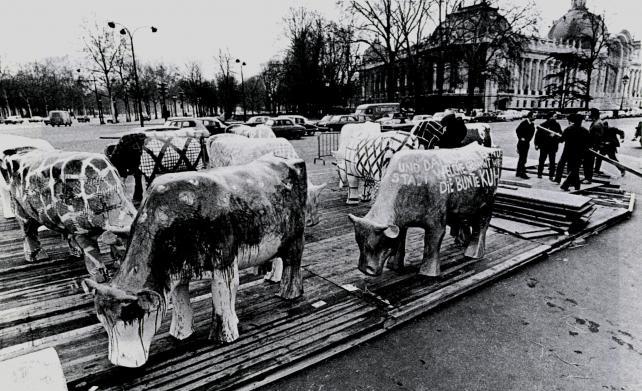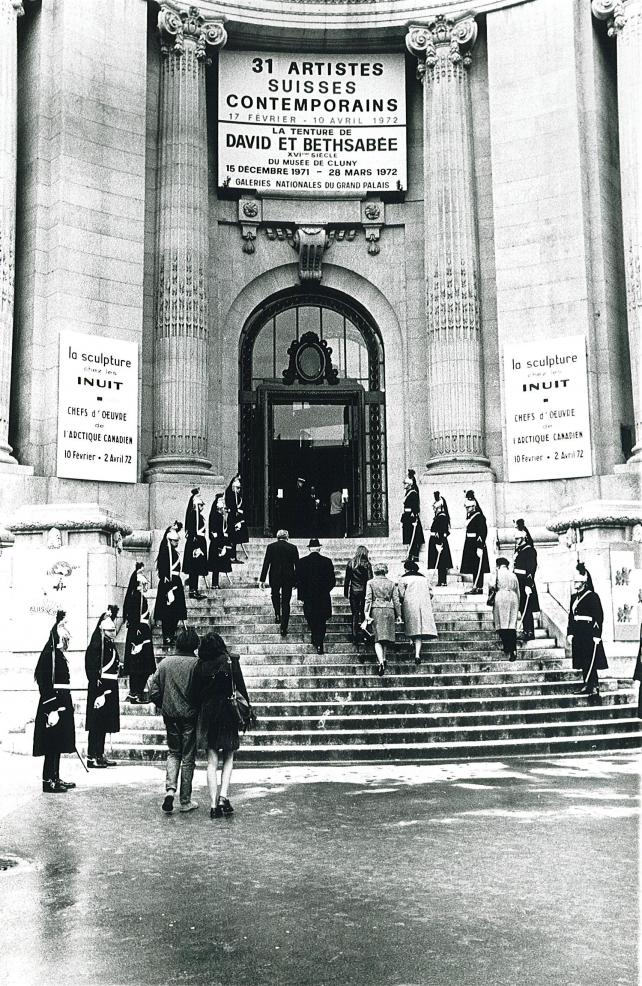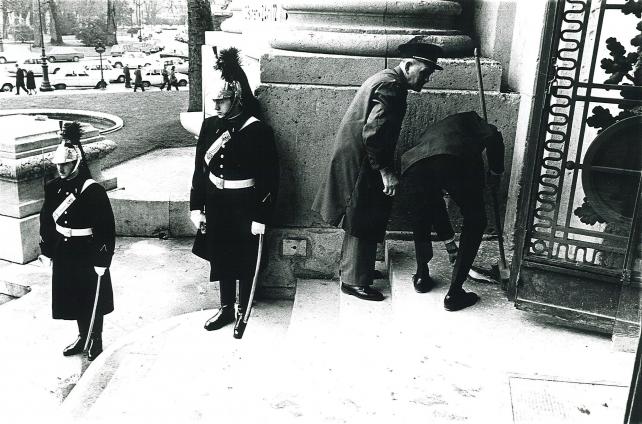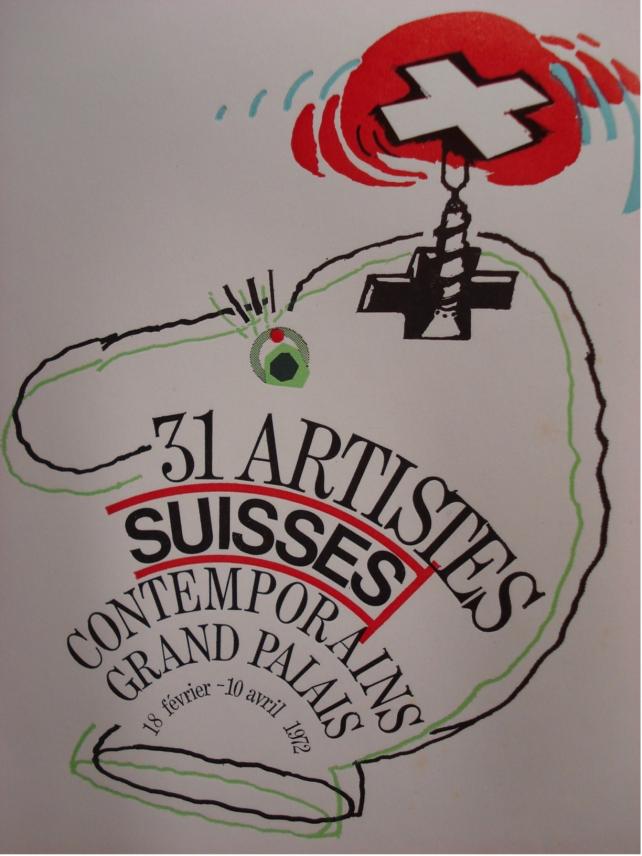The cows of the Champs-Elysées
In spring 1972, an extraordinary obstacle tied up traffic on the Champs-Elysées in Paris: a herd of plastic cows painted in vivid colours by Swiss artist Samuel Buri. His work became the most notable installation of the exhibition 31 artistes suisses contemporains organised by Pro Helvetia. Presented to the Parisian public, the cows illustrated the rediscovery and transformation of national symbols under the influence of American Pop Art.
Born in 1935 in Täuffelen in the canton of Bern, Buri was one of the most famous Swiss artists in the 1960s and 1970s. His career and the diversity of his artistic work exemplified one of the key features of postmodernism, i.e. the simultaneous use of different artistic methods and styles. The trajectory of Buri’s work, starting with influences of 19th century French painting, includes abstract art in its expressive form of tachism in the early 1950s only to return to figurative art by way of American Pop Art in the beginning of the 1960s.
Buri began to be interested in cows after a visit to the "Salon de l’Agriculture” in Paris, 1969. He built his first polyester cow 1970, in Givry, Burgundy, where he lived with his family. Applying a similar technique as with his paintings, Buri created multiple versions of the animals by first painting them in different colours and then covering them with wire netting.
The first public display of the polyester cows was at two livestock markets in the French province, a venue where the artist’s work was integrated in public space. In 1971, three cows were displayed in the city centre of Munich, a year before the entire herd travelled to Paris for the Pro Helvetia exhibition.
Even if the public associated the cows assembled in front of the Petit-Palais with touristic images of Switzerland, the artwork was not of promotional significance for the nation. From the latter half of the 1960s onwards Buri considered himself a French artist and exhibited his work in the French Pavilion at the Venice Biennial in 1970.
More than just a reinterpretation of a traditional Swiss symbol, his cows illustrated the interaction with images produced by the consumer society, characteristic of Pop Art.
In addition to his cows, Buri reinvented further icons denoting his native country’s identity. In 1967, he painted the picture Berner Oberland, inspired by an advertisement in Le Monde. In this work, not without its analogies to Berner Alpen by Ferdinand Hodler, he employs Pop Art techniques to transform national imagery into trivial objects of consumer society, not unlike the Coca Cola Cans of American Artist Andy Warhol. (tk)
Archives
AFS E9510.6 1991/51, Vol. 858
Bibliography
Denzler, Jörg : Samuel Buri – ein Maler zwischen Avantgarde und Rückzug, Francfort, Berne, P. Lang 1990
Katz, Katharina : Samuel Buri: Monographie, Berne, Benteli 1995

